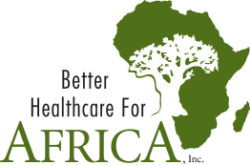Improving the Infrastructure and Capacity for Care at St. Albert’s Mission Hospital in rural Zimbabwe: a collaboration between Dr. Lowell Schnipper and Better Healthcare for Africa (BHA)
The successful collaborations on screening for cervical cancer have facilitated a clear understanding of critical needs of hospitals in rural Zimbabwe. Equipment is often old, outdated, frequently not functional and in dire need of replacement. Critical infrastructure such as access to water is often compromised resulting in shortages that limit the ability to have running water in the hospital, adequately irrigate the farm that the hospital manages in order to be self-sustaining, and enjoy continuous access to electricity on a 24 x 7 basis. To address these needs a collaboration between Dr. Lowell and Ms. Hester Schnipper and Better Healthcare for Africa (BHA) has resulted in substantial improvements in a few crucial sectors. These cover the broad areas of access to water and upgrading equipment.
Improving Critical Infrastructure
Through a generous grant from a foundation the asks to remain anonymous, St. Albert’s Hospital has procured the following:
- Diagnostic radiology unit
- Enhanced capabilities in the clinical laboratories with donation of a GenXpert to identify pathogens causing HIV, TB HPV, and other serious infectious diseases
- Auto-analyzer to facilitate efficient analysis of blood for chemical abnormalities
- Coulter counter for performing rapid blood counts
- Fume hood to enable technologists to work safely with contaminated materials
- Re-equip the Physical Medicine and Rehabilitation department with new equipment
- Ancillary equipment such as chairs, blood pressure cuffs, electrocardiogram machine
The Water Project
During a visit to St. Albert’s Hospital 2 years ago a shocking site was that of a surgeon scrubbing over a basin that was held by an aide while a nurse poured water over her hands. The roots of this problem are multiple. Inadequate rains frequently cause drought conditions in Zimbabwe, bore holes drawing water from underground aquafers were plugged by rocks thrown there by vandals and the generator driven pump that moves water from the nearby reservoir (the hospital built a dam over a creek more than 20 years ago) was defective, and when functional it is not operational when the nation’s electricity is turned off. There was a period in 2017 when the electricity Albert’s was turned off for three weeks! Unquestionably, this is the most serious challenge the hospital faced. Our commitment is to assist in alleviating the water shortage; several initial steps have been taken with others to follow. These include:
- Purchase solar batteries for the cervical cancer screening unit to enable this program to continue when the electrical grid fails to supply power (an everyday occurrence).
- Purchase a new water pump that is powered by an electrical generator-this has made a substantial positive impact on reliable access to water at the hospital, since there is now water routinely available in the operating theater and elsewhere including all toilets
- An aspiration is to bring on-line a solar powered water pump to move water from the reservoir to the hospital and/or farm land in order to have the capability of operating independently with respect to availability of electrical power from the national grid
To learn more about these hospitals see their websites:
- Albert’s: stalbertsmissionhospital.org
